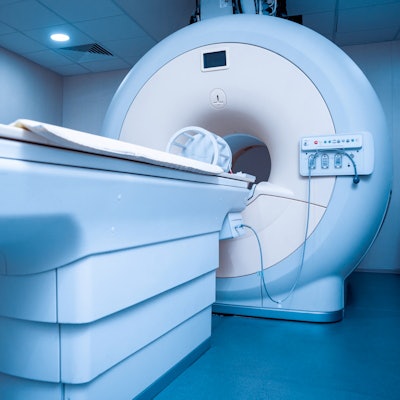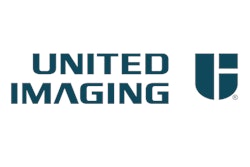
The COVID-19 pandemic most likely led to a 35% drop in MRI procedure volume in the U.S. in 2020, according to a new report from IMV Medical Information Division. While procedure volume bounced back toward the end of 2020, it is still below prepandemic levels.
 Lorna Young of IMV Medical Information Division.
Lorna Young of IMV Medical Information Division.In 2020, an estimated 27.4 million MR procedures were performed by radiology/imaging departments in U.S. hospitals, their associated outpatient locations, and independent imaging centers using fixed MR systems and mobile MR services, according to IMV Medical Information Division's newly published 2020 MR Market Outlook Report. Compared with 42 million procedures reported by IMV in 2019, total MR procedures decreased 35%, likely due to COVID-19.
The COVID-19 pandemic had an immediate impact nationwide on total MR procedure volume in early 2020. IMV's survey was conducted in August/September 2020, and the respondents were asked how many MR procedures were conducted in January and April 2020. Based on their responses, the estimated nationwide monthly MR procedure volume in January 2020 was 2.79 million but declined by almost 50% in April 2020 to 1.42 million.
Respondents were also asked to estimate their anticipated 2020 year-end MR procedures, which resulted in IMV's year-end 2020 estimate of 27.4 million. On a monthly basis this averages to about 2.28 million procedures, which is about 60% higher than the April estimate of 1.42 million but is still lower than the "pre-COVID" January 2020 monthly estimate of 2.79 million.
The survey respondents were asked about their perspective on what changes have affected their departments due to the current COVID-19 pandemic and economic climate. Two of the top changes affecting MR operations due to COVID-19 are "MR outpatient cancellations or no-shows due to fear of exposure to COVID and/or stay-at-home guidelines/orders" and "declines in MR patient exam volume due to reduction in related elective procedures," with over 70% of the respondents so indicating.
Indeed, MR procedures conducted on outpatients took a bigger hit in 2020 than emergency or inpatient procedures. Overall, the proportion of outpatient MR procedures dropped from 79% in 2019 to 70% of the total, while procedures with emergency patients increased from 7% to 11% and MR procedures performed on inpatients increased from 13% to 19% of the total.
While the overall volume of MR procedures has declined in 2020, the mix in the types of procedures performed has remained relatively stable over the past decade. Since 2010, the two highest-volume procedure categories have been "spine" studies, which have comprised 23% to 26% of the total MR procedures, and "brain (nonvascular)," which have comprised 21% to 23% of MR procedures.
Interestingly, due to COVID-19, 8% of the 2020 MR procedures are estimated to have been performed for the purpose of assessing patients with COVID-19, including using MR to evaluate COVID patients for associated post-COVID follow-up conditions. A higher 29% of the MR procedures in the 400+ bed hospitals were performed for COVID-related assessments.
The MR respondents were asked what actions their departments have already completed in order to deal with the ongoing COVID-19 crisis and to prepare for the future. The top two actions taken to date have been to "strengthen disinfection routines for cleaning MR scanners and the rooms the MR equipment is used in" and "modify waiting room protocols/layouts to facilitate social/physical distancing of MR patients," with about 90% of the sites so indicating.
A major impact of the disinfection routines on their MR workflow that respondents commented on is the need to increase the downtime after COVID-19 patients are scanned, which has reduced their operational efficiency and revenue, particularly due to the logistics unique to the MR suite to deal with MR magnet safety precautions.
- "Our MRI team cleans their own suite, so as not to have any mishaps with housekeeping entering the magnet room. After a positive COVID patient has been scanned, our team must have extra time blocked on the schedule to do a deep clean of the room."
- "Cleaning after doing a COVID-19 patient and allowing room to exchange air according to [American College of Radiology] guidelines affects productivity."
- "Needing to provide extra time for cleaning processes; especially if patient is positive. This causes delays in scheduling and not as many patients scheduled."
The impact of the COVID-19 pandemic throughout 2020 has varied, in part due to how the virus has spread geographically. In this survey, MR respondents located in rural areas did not appear to be as concerned about the impact of the pandemic on their MR operations compared to those in urban or suburban areas.
While almost one-quarter of the respondents in urban areas indicated that COVID has had a high impact on MR department operations, only 12% of those in rural areas felt the same urgency. Moreover, over 90% of the respondents in suburban locations indicated that their MR technologists have been required to wear personal protective equipment (PPE), compared to only two-thirds of those in rural areas.
The monthly fluctuations of COVID have had an impact on staffing and staff morale, regardless of whether the patient load has been low or high. In the months when the number of patients has been below the norm, MR staff have experienced reduced operating hours or days open, layoffs or furloughs, and/or have taken sick leave. As the 2020 year progressed, many of the MR departments then had to deal with a significant backlog of MR patients, which also affected MR staff morale.
- "We had a sudden high demand of MRI exams due to the state "re-opening" restrictions. More patients seeing their physicians resulting in an influx of appointments with fewer staff and operating hours has put stress on the department and staff."
- We're anticipating a backlog of patients wanting scans once they feel safe to come to the hospital. This will result in a full schedule or long wait times to be scheduled."
Going forward, staff morale is a key concern for the department administrators due to these operational issues and the associated stress with day-to-day uncertainties. Over four-fifths (85%) of the respondents indicated that even if "post-COVID recovery" has taken place, "improving staff satisfaction and morale" will be a top department priority.
Respondents were asked what impact the pandemic may have had on their purchase plans. Due to the COVID-19 pandemic, 23% of the respondents said the pandemic has caused "decreased funding for purchasing new MR scanners" or they are experiencing "operating budget reductions for MR accessories and consumables."
Moreover, 25% of the MR sites said their original plans to order MR scanners from 2020-2023 have "Yes" or "Maybe" changed, with the key impacts being a possible delay in ordering/replacing some units or a reduced number of MR scans ordered.
While COVID-19 may be slowing the purchase of MR equipment, "in-person contact" is still the most preferred method as opposed to virtual online alternatives to evaluate MR equipment, either at other healthcare facilities or at a manufacturer location. Presentations by sales representatives are the top information source the respondents have used when purchasing MR equipment, with 68% of the respondents so using, but given the pandemic, many are open to flexible arrangements.
While respondents still lean toward in-person contact for presentations by sales reps, with 45% giving preferring in-person contact, 28% prefer virtual online alternatives, depending on the phase of their buying process. Regarding professional conferences/conventions, a similar proportion of the respondents prefer in-person (37%) versus virtual alternatives (33%).
Lorna Young is senior director, imaging insights, at IMV Medical Information Division, part of Science and Medicine Group.
IMV's 2020 MR Market Outlook Report explores market trends in U.S. hospitals and imaging centers, including procedure volume, manufacture-installed base features and share, the use of OEM vs. third-party service providers, purchase plans, brand loyalty, contrast utilization/budgets, MR power injectors, and site operations characteristics. In addition, due to the unprecedented COVID-19 pandemic, this report covers the impact COVID-19 is having on MR operations nationwide.
The 2020 MR Market Outlook Report was published in December 2020 and is based on responses from 311 radiology/MR administrators who participated in IMV's nationwide survey in August-September 2020. Their responses have been projected to the IMV-identified universe of hospitals and imaging centers in the U.S. that use fixed MRI systems or mobile service providers to perform MR imaging, and the report provides market forecast scenarios addressing the MR unit market in the United States for 2020-2024. Vendors covered in this report include Bayer/Medrad, Bracco, Canon/Toshiba Medical Systems, Esaote, Fonar, GE Healthcare, Guerbet, Hitachi Medical Systems, Philips Healthcare, Siemens Healthineers, and United Imaging.
For information about purchasing IMV's 2020 MR Market Outlook Report, visit the corporate website at http://www.imvinfo.com or call 703-778-3080 ext. 1033 to speak with a representative.
Disclosure: IMV Medical Information Division is a sister company of AuntMinnie.com.



.fFmgij6Hin.png?auto=compress%2Cformat&fit=crop&h=100&q=70&w=100)




.fFmgij6Hin.png?auto=compress%2Cformat&fit=crop&h=167&q=70&w=250)











